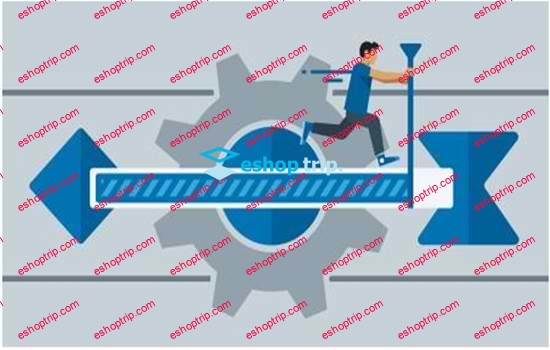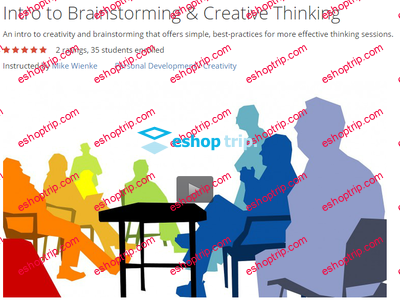Last updated 1/2023
MP4 | Video: h264, 1280×720 | Audio: AAC, 44.1 KHz
Language: English | Size: 1.54 GB | Duration: 3h 36m
Learn the fundamentals of HR domain
What you’ll learn
Describe End-to-End HR Functions
Explain how the role of HR in the company changes with change in functions and policies
Design competency based job analysis
Perform recruitment from various channels and learn common terminologies in different departments and key industries
Design Performance Management system for any organisation
Explain the importance of Labour laws and Statutory compliances for HRs and key objectives of different labour laws
Apply Instructional System Design techniques
Design and develop as per BLOOM’s taxonomy
Measure effectiveness of training programmes
Requirements
Understanding of the English language.
Interest in Human Resource Management
Interest in Business, Leadership and Management
Description
Human Resource Management is concerned with the people dimension in management. It is the Management of Human resources by attracting, developing, utilizing, retaining and motivating the human resources to achieve organisation’s objective. Or in simple terms, effective and efficient management of the human resources of office to achieve company’s objective. Here you will learn about all the functions of HRM in detail with interesting sessions, live projects, case studies, articles, demos and templatesHuman Resource Management This programme will cover all the functions of HR with real-life examples.In the introductory module, you will get to know the actual scenarios HRs faced in company and how to smartly overcome challenges.In manpower planning, learn about various factors you should keep in mind while doing manpower planning and what are the recent trends in different industries.In job analysis, the main focus would be on competency-based job analysis. Many companies are moving from traditional job analysis to competency based job analysis.In the recruitment and selection module, learn about current trends and the common terminologies used.In Training and Development, you would be able to do Instructional System Design, how to do proper analysis, write measurable objectives and ace trainings.In performance management, know about various methods in performance management.Human Resources of a company play a very role in the success of a company. Hence having a strong background in the same is really essential.Section 1: Introduction to Human Resource Management1. Self AssessmentTo check your current knowledge of HR domain2. What is HRM?Explain the meaning of Human Resource Management.Explain the nature, scope, and objective of HRM.Explain how the role of HR grows and changes with the size of the company.Explain the correlation between the industry (number of employees) and the number of HRs required.Describe the evolution of HRM, globally and in India.Explain the meaning and differences between different terms related to HRM.3. Functions of HRMDescribe in brief the different functions of HRM.4. Challenges in the HR roleDescribe the challenges faced in HRM.Debunk the myths about an HR.5. HR – Competencies RequiredList the competencies required by an HRExplain the importance of each competency.Section 2: Manpower Planning and Job Analysis1. Meaning and Importance of Manpower PlanningExplain the meaning and importance of right manpower planning. (Explain the meaning of manpower planning.)Discuss the importance of manpower planning with the help of a case study.Explain types of manpower.2. Steps Involved in Manpower PlanningIllustrate the steps in manpower planning.3. Example of steps Involved in Manpower planningIllustrate the steps Involved in Manpower planning with an example4. Factors in forcasting Manpower requirementDescribe different techniques of forecasting.Describe the common factors affecting manpower planningDescribe the current trends in the industry.Section 3: Job Analysis (Traditional and Competency-based)1. Meaning of Job Analysis and Competency-based job analysisExplain the meaning of job analysis and its components- job description and job specification.2. Competency-based Job AnalysisExplain the competency based job analysis and its application.Design a competency based job analysis.3. Sources for Collecting InformationDescribe the sources for collecting information.Section 4: Recruitment and Selection1. Meaning of Recruitment and SelectionExplain the meaning of recruitment and selection.2. Steps Involved in Recruitment and SelectionDescribe the steps in recruitment and selection.3. Meaning of SourcingExplain the meaning of sourcing.4. Different sources of RecruitmentExplain the different sources5. HR/Preliminary Screening callListen to a mock call and analyse the common mistakes made by an HR in an HR screening call.Make an HR screening call.Write a proper email sharing job details with the candidate.6. Assessment TestsDescribe different types of assessment tests.Explain what constitutes intelligent behaviour.Understand the difference between intelligence and aptitude.Explain the concept of IQ.Describe different methods that are used to assess psychological attributes.7. In-Person InterviewDescribe structured and unstructured Interviews.8. Common hiring biasesIdentify common biases that are present while conducting in-person interviews.9. Decision and Job OfferDifferentiate between offer letter, letter of intent, and appointment letter.Apply tips on salary negotiation.10. Background CheckDescribe the current trends in conducting background checks.11. OnboardingDescribe the current trends in onboarding.12. Common TerminologiesExplain common terminologies with reference to recruitment and selection.Explain the commonly used terms in different departments- IT, marketing, finance.Explain the commonly used terms in the retail industry.13. Challenges in RecruitmentDescribe the challenges faced in recruitment.Case-study – GoogleSection 5: Training and Development1. Meaning and Importance of Training and DevelopmentExplain the meaning and importance of training and development.Differences between training and development.2. ADDIE modelExplain the meaning of Instructional System Design (ISD).Illustrate the ADDIE model.3. AnalyseDo Training need AnalysisStudy 5Ws and 2Hs in detail4. DesignDesign Session PlanExplain the meaning of session plan.Illustrate Bloom’s Taxonomy.Explain the different methodologies of training delivery.Apply Bloom’s Taxonomy to design a session plan.5. DevelopDevelop the training content and learn engagement tips6. ImplementDelivering a Training ProgramApply the tips and tricks while delivering a training program.7. EvaluateMeasuring the Success of Training ProgramExplain the Kirk Patrick modelCase StudySection 6: Labour Laws and Statutory Compliances1. Why do we need to be very strong in Labour lawsExplain the importance of Labour laws in the life of HRs2. Common terminologiesExplain the common terminologiesSection 7: Performance Management System1. Meaning and key stepsExplain the meaning of performance management system.Explain the importance of effective performance management.Illustrate the key steps in performance management system2. What should we assess?Describe different parameters that can be assessed3. Performance Management System vs. Performance AppraisalDescribe performance appraisal.Distinguish between performance management system and performance appraisal.4. Key characteristicsIllustrate the key characteristics of an effective Performance Management system5. SMART goal settingsExplain SMART goal settings6. KRAs and KPIsExplain KRAs and KPIs7. Giving constructive feedbacksApply giving constructive feedbacks
Overview
Section 1: Introduction to Human Resource Management
Lecture 1 What is HRM?
Lecture 2 Evolution
Lecture 3 Scope
Lecture 4 Functions of HRM
Lecture 5 Challenges in HR role
Section 2: Manpower Planning
Lecture 6 Meaning and Importance of Manpower Planning
Lecture 7 Steps in Manpower Planning
Lecture 8 Example of Steps involved in Manpower planning
Lecture 9 Factors in forecasting Manpower requirements
Section 3: Job analysis (Traditional and Competency based)
Lecture 10 Meaning of Job analysis and Traditional job analysis
Lecture 11 Competency based Job analysis Part 1
Lecture 12 Competency based Job analysis Part 2
Lecture 13 Common methods of collecting information
Section 4: Recruitment and Selection
Lecture 14 Meaning of Recruitment and Selection
Lecture 15 Steps involved
Lecture 16 Meaning of Sourcing
Lecture 17 Different sources of Recruitment
Lecture 18 HR/Preliminary Screening call
Lecture 19 Assessment Tests
Lecture 20 In-person Interview
Lecture 21 Common hiring biases
Lecture 22 Decision and Job offer
Lecture 23 Background check
Lecture 24 Onboarding
Lecture 25 Common technologies
Lecture 26 Challenges in Recruitment
Section 5: Training and Development
Lecture 27 Meaning
Lecture 28 Instructional System Design – ADDIE Model
Lecture 29 Analyse
Lecture 30 Design
Lecture 31 Develop
Lecture 32 Implement
Lecture 33 Evaluate
Section 6: Performance Management System
Lecture 34 Meaning and key steps
Lecture 35 What should we assess?
Lecture 36 Performance Management System vs. Performance Appraisal
Lecture 37 Key characteristics
Lecture 38 SMART goal setting
Lecture 39 KRAs and KPIs
Lecture 40 Giving constructive feedbacks
Section 7: Labour Laws and Statutory Compliances
Lecture 41 Why you should be very strong in Labour Laws
Lecture 42 Common legal terms which everyone should know
Those who have interest in HR domain,HR Management Consultants/Practitioners,Business Owners/Entrepreneurs/Top Management/Managers,Management students,Want to work in companies,Want to work as Freelance HR Practitioner/Management Consultant,Want to start own HR Management consulting firm
HOMEPAGE
https://anonymz.com/?https://www.udemy.com/course/certification-course-in-human-resource-management-hrm/











Reviews
There are no reviews yet.